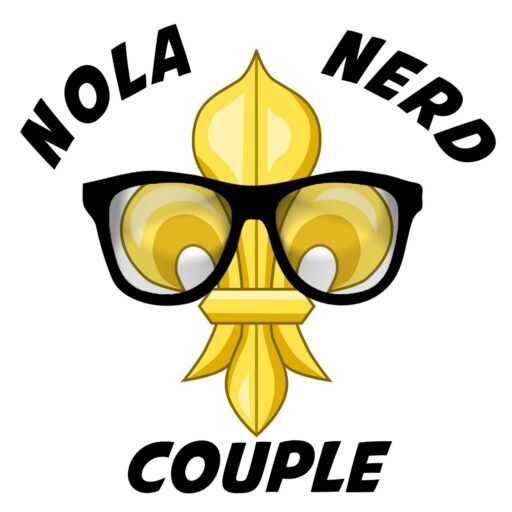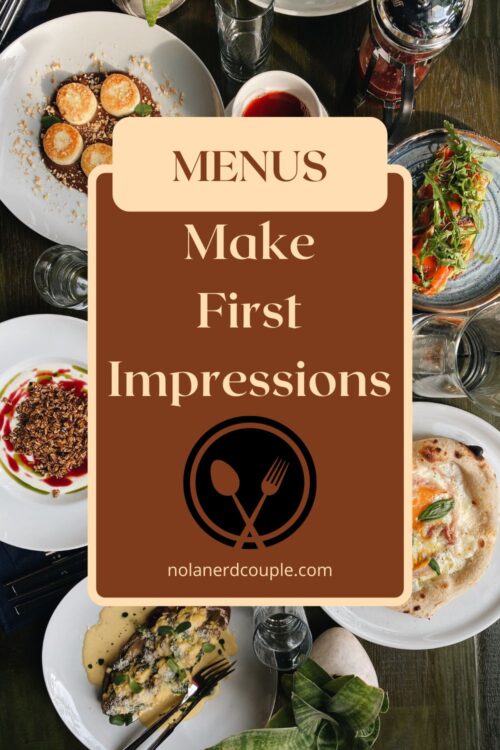When you go to a new restaurant for the first time, before you have your first bite, you probably have made up your mind about whether the place is one you would like. What does the restaurant look and smell like? How is the staff? What kind of clientele is there? However, I think one thing that most people don’t think about is that menus make first impressions.
Years ago, my mother-in-law opened a little breakfast and lunch cafe in Panama City, Florida. Being that I teach a digital graphics class, she asked if my students could design a menu for her. Real-world applications are about as high as learning can get, so I developed a rubric, and after giving them some tips about good design, I let them get to work.*
The more questions the kids asked, the more I thought about menus. Menus, besides telling us what the restaurant serves, communicate about the food: Are there too many items? Do they specialize in something? Do they take pride in their work? Is there a disconnect between the style of the restaurant and the style of the food?
Menus make first impressions. Menus are a letter to the customer, and like most professional letters, they have best practices. As I tell my students, fonts have a voice, and choosing the right one will help give a restaurant a voice. Restaurants should stay away from overly decorative fonts. Also, restaurants should stay away from Comic Sans (unless it’s a comic book restaurant). Also, restaurants need to stay away from Papyrus unless you are serving ancient Egyptian or Roman food. Either nice block letters or an elegant script font is all a restaurant needs.
Menu length is important. Size does matter, but smaller is better. When I get a book for a menu, I know I’m not getting a very good meal. It might be ok, but there is no way a restaurant can serve that many things well. In my experience, one-page menus usually mean better food. You see this all the time on Kitchen Nightmares and Restaurant: Impossible. Less is always more.
However, a one-page menu filled with type is not the answer either. The brain needs negative space to help keep order and hierarchy. Don’t make the description in the same size font as the dish’s name.
I hate seeing advertisements on menus. I get it, but I want to order off a menu, not a newspaper. If a restaurant has to resort to that, then maybe they should take a long look at their menu and do some editing both on paper and in the kitchen. If it is unavoidable, then make sure the food takes precedence.
Online menus are great, especially in this post-Covid world. However, restaurants need to be careful about this. While older generations don’t really have any excuse for working smart phones (they have been around for nearly two decades), seeing their phones is important. Again, good font choice and color are important, as well as having a responsive design. It is also a bonus if the online menu has pictures.
Online menus, the more I think about it, need to be a main focus. Most people will look online before going to a new restaurant. They will want to check it out first, and while the pictures are nice, they want to know if there will be something they will eat. Online menus make the first impression in most cases.
*The Winning Menu! Unfortunately, the cafe is no longer
This is just my opinion of course! What is your take on how menus make first impressions? What do you like to see in a menu? More pictures? Clearer explanations? What do you not like to see? Let’s talk about it in the comments!
About The Author
Discover more from NolaNerdCouple.com
Subscribe to get the latest posts sent to your email.


Darn. I like Papyrus and Comic Sans! (My graphic-designer son agrees with you.)
They have their place. I really hate when I get a report at work and it\’s written in comic sans. Now, comic sans would be great for a kids menu.
I have my own list of menu pet peeves:
–typos and misspellings. is it so hard to find a competent proofreader? Superfluous apostrophes show up all over the place: incorrect possessives and plurals, incorrectly used foreign language terms (attention, USA: panino = 1 sandwich, panini = more than one sandwich), and incorrectly used words top my list of peeves.
–inaccurate descriptions: if the menu says \”thick-cut, applewood smoked bacon\” and I get a sorry-ass thin strip of Sysco\’s finest, I\’m an unhappy diner. If your products vary due to costs or suppliers, it is understandable. But you shouldn\’t mis-represent the quality of your food.
–overwrought descriptions: enough already with the \”so good, you\’ll want to slap your grandma\” or \”world\’s finest\” or \”hotter than a July afternoon\” even cracker barrel doesn\’t bother with the folksy, cute stuff on the menu.
What do I want to see? A clear, serif typeface (easier to read), bumped up a point or two larger than you might think at first glance (not everyone wants to search for their reading glasses), printed in black on light colored paper. Don\’t waste money on laminated, colored menus. Nothing\’s sadder than a barely-opened cafe with half of the menu items already scratched out or covered by \”no longer available\” stickers. Just print something simple on paper–buy menu holders if the plain paper isn\’t sturdy enough.
I forgot all about typos. Another thing that upsets me is designing a menu without thinking about the interior design of the restaurant. Dark restaurants with earth colored menus means my iPhone flash light will be used which in turn makes me look tacky.
When I watch Bar Rescue, one of the first things suggested is to cut the menu down to one sheet, front and back, at most.
Exactly. Chains can get away with it because they are more factories then kitchens, but not mom and pop\’s. And rarely do you see high end restaurants do more than one page.
The first time I ate at Houston\’s, I remember thinking it odd that the menu was a single sheet, as opposed to the novella that is the Applebee\’s menu, speaking of food factories.